Need more organic traffic? We get it—it’s one of the best kinds.
In this article, we’ll share tactics that helped us at Ahrefs increase organic traffic over the years. Nothing too complicated. Only practical stuff anyone can master.
We’ll start with things that can squeeze more traffic from your existing content and then move on to creating new content.
First things first. If you want to get more organic, you need to make sure that:
- Google can crawl (i.e., access) and index (i.e., list in a database) all your pages that should generate traffic.
- Your website adheres to the so-called Page Experience signals. In other words, it has to be mobile-friendly, fast, stable, and easily accessible to the user.
- Your website is ideally free from other SEO issues like missing title tags and broken pages.
If you don’t keep your website in good “SEO health,” you may undermine other SEO efforts or even keep your website from ranking.
The simplest possible solution is to use Google Search Console and Ahrefs’ Site Audit to find common issues, then fix them.
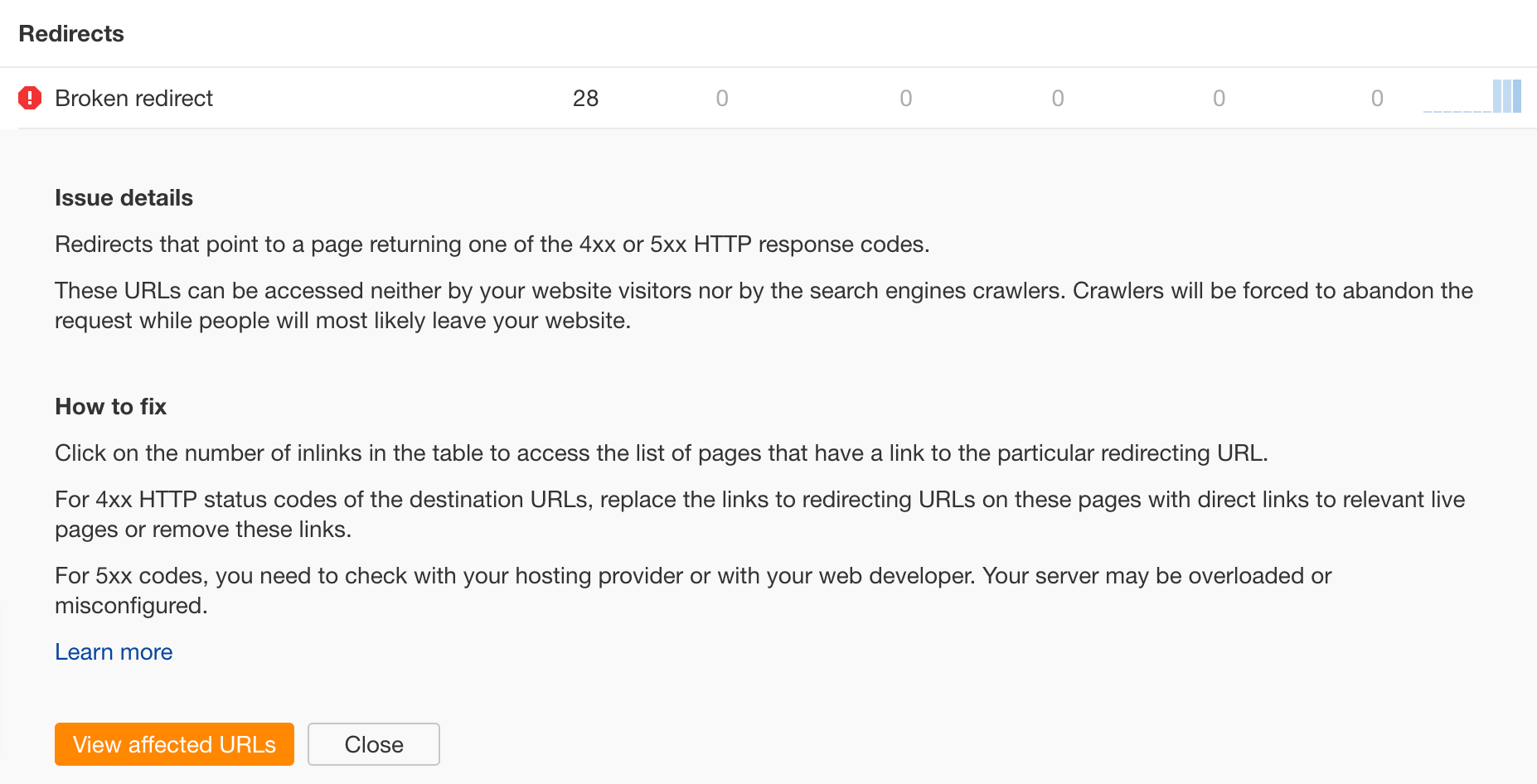
If you’re entirely new to SEO, use our SEO audit to find and fix basic issues.
PRO TIP
While fixing broken pages, pay particular attention to those with backlinks. It’s often worth reinstating these pages or redirecting them to preserve link equity. Tip #12 on our list of SEO tips explains how.
If two or more pages target the same keyword and the same search intent, they may hurt each other’s organic performance. A situation like this is called keyword cannibalization.
If you solve any possible cannibalization issues, your content may rank higher and, as a result, you get more visitors.
The fastest way to uncover cannibalization issues is to perform a sitewide check with Ahrefs’ Site Explorer.
- Enter your domain
- Go to the Organic keywords report
- Switch on the Multiple URLs only toggle

What this shows is a list of potential keyword cannibalization issues. To investigate further, look at each keyword and find pages that meet these criteria:
- Are at least 6 months old
- Intended to rank (don’t use pages like “About” or otherwise valuable to the user)
- Rank 4–20
- Are not targeting a unique keyword
- Are not targeting a unique search intent
Pages that meet the above criteria are the pages you should consolidate with your better-performing content. We did the same thing for two of our guides that were “cannibalizing” each other. We combined both articles to make a better one, deleted the worse-performing guide, and redirected it to the better-performing one.
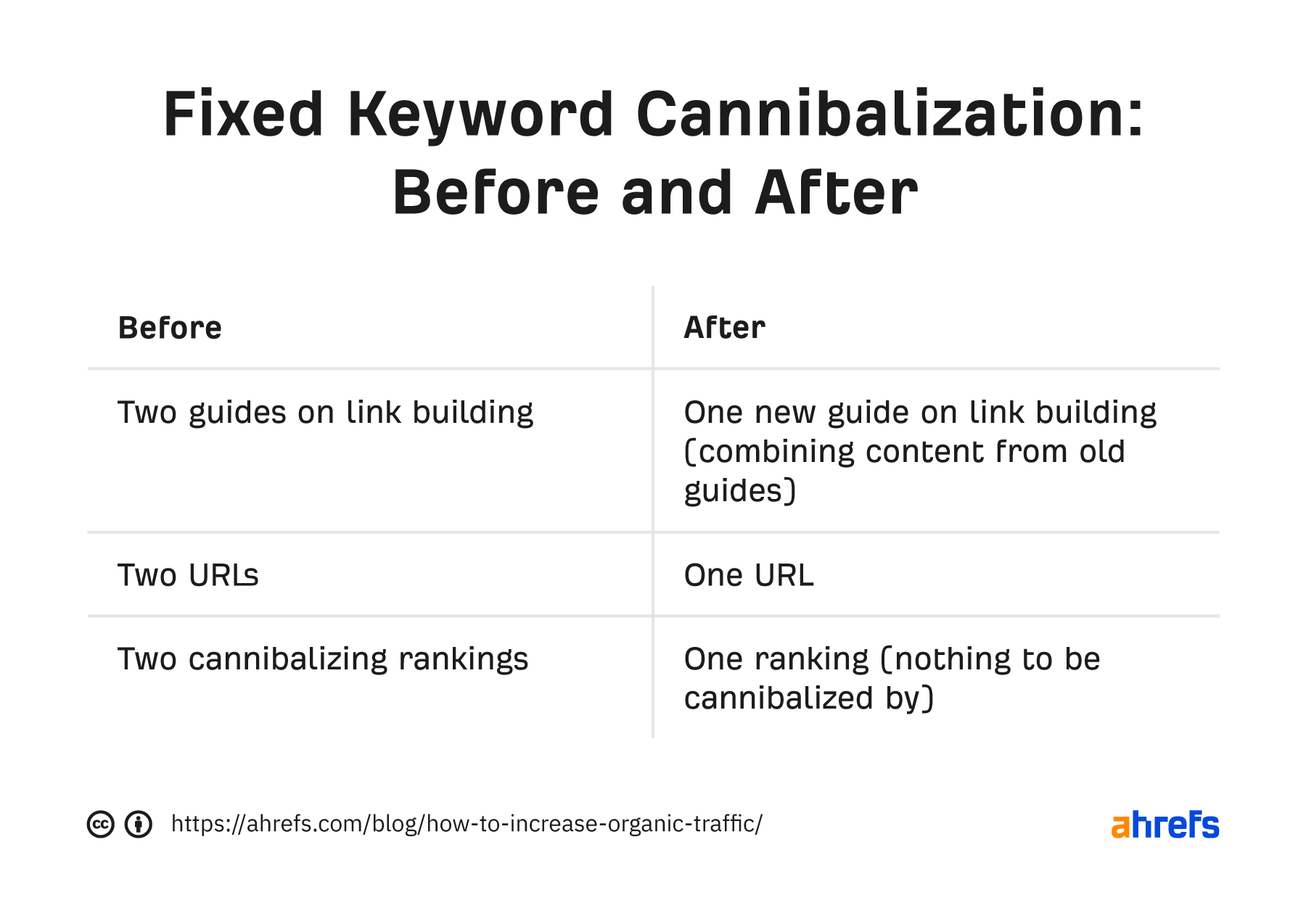
As a result, we had one guide instead of two, but that one guide got more organic traffic than both before.

Learn more: Keyword Cannibalization: What It (Really) Is & How to Fix It
Pages that don’t rank on the first page of Google get very little traffic. But it doesn’t necessarily mean it’s the end for them.
They may just need a rewrite as this article did:
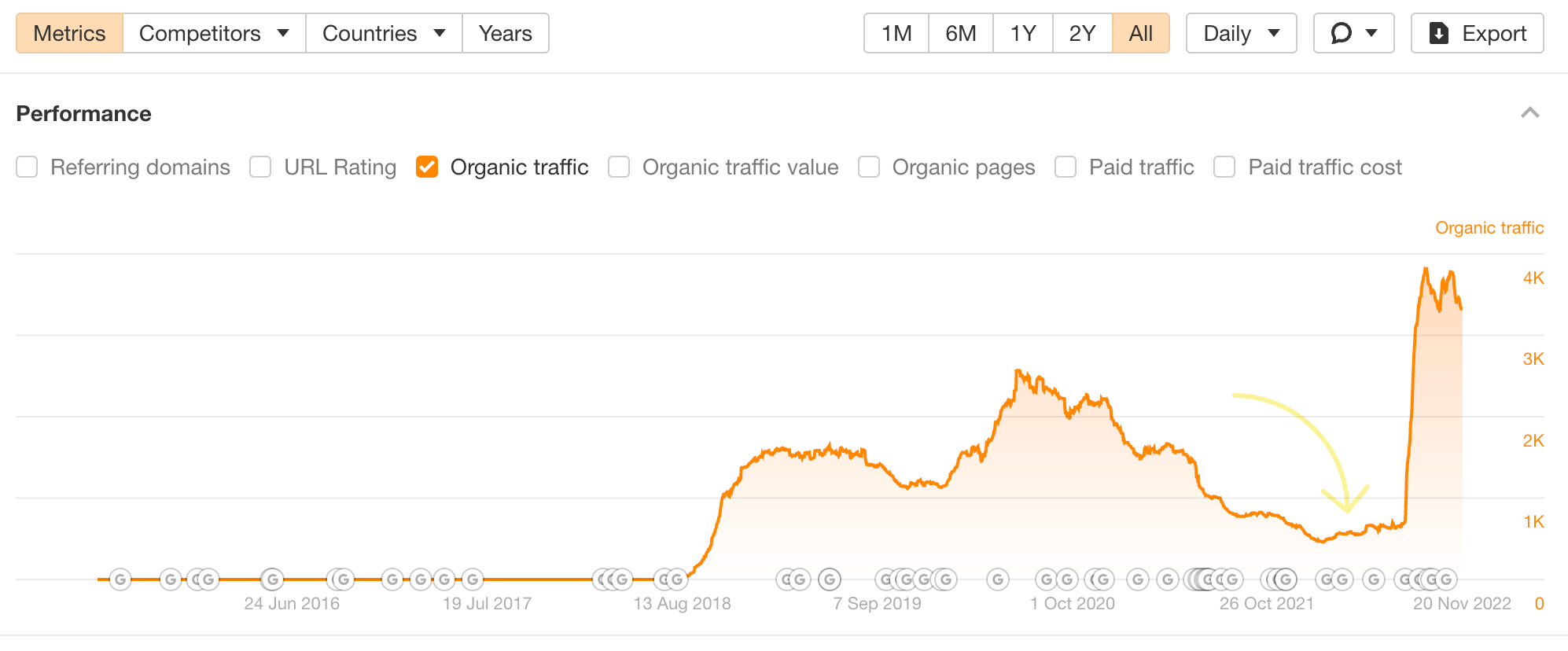
If you’re using WordPress, you can use our free SEO plugin to find rewrite opportunities for you.
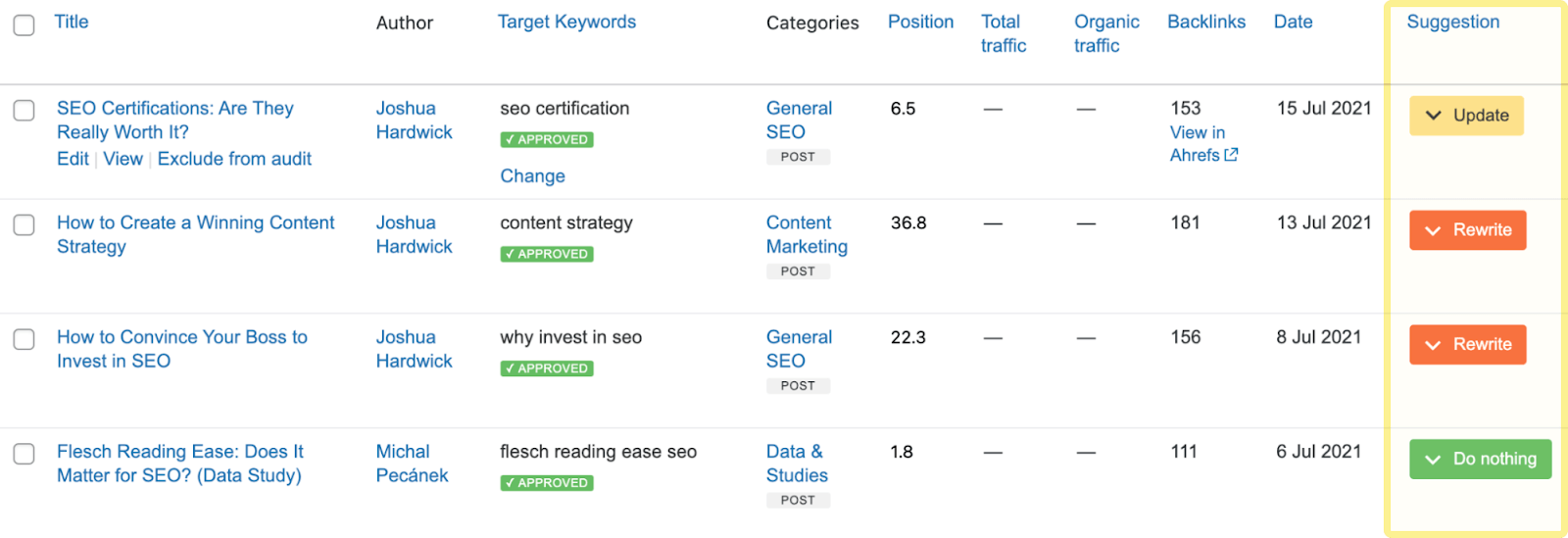
Alternatively, track your main keyword targets in Ahrefs’ Rank Tracker, then filter for pages in positions 11+.
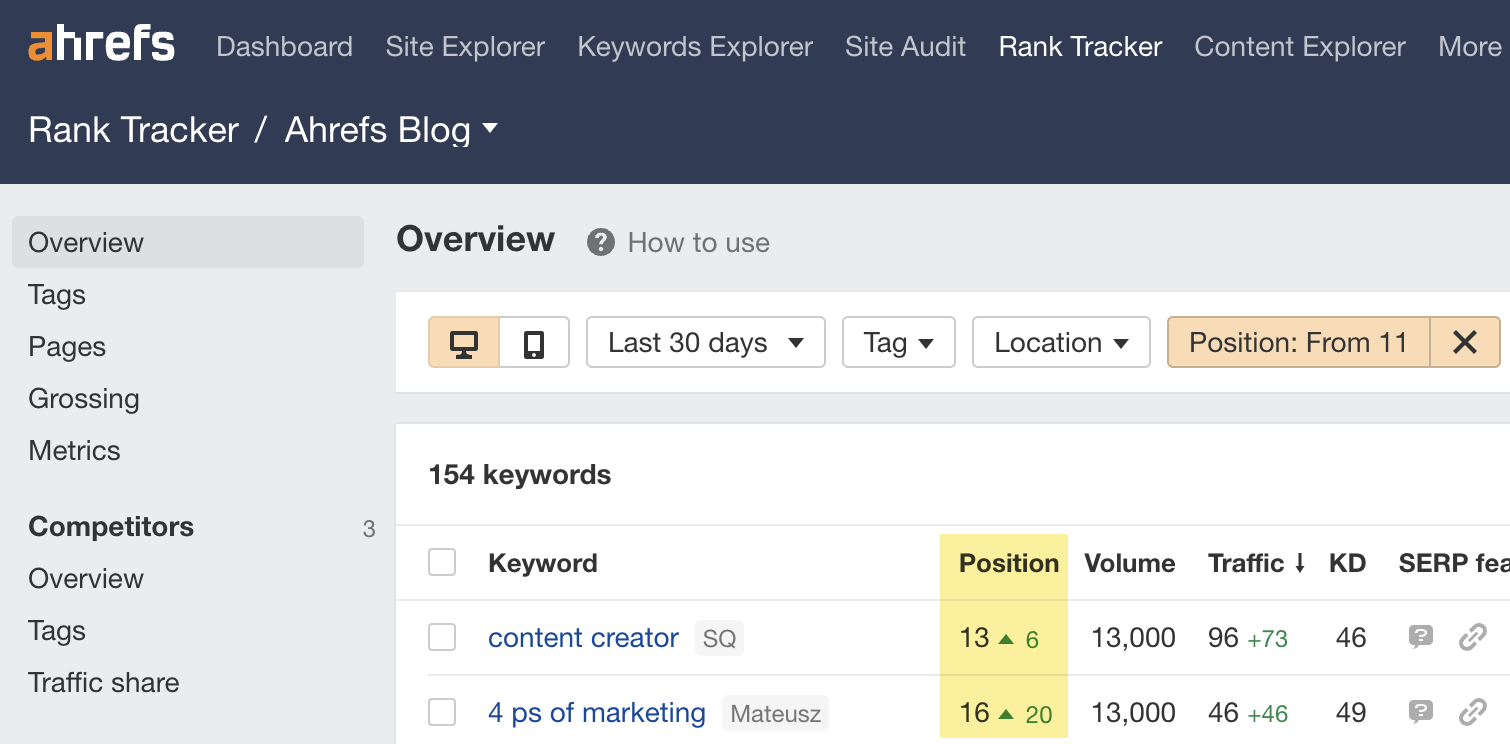
Once you’ve found a page, watch this video to learn the process for rewriting:
If you’re ranking on the first page of Google, even jumping up by one position can make a huge difference in traffic.
For example, based on our estimations, jumping from position #6 to #5 could double organic traffic from this keyword.
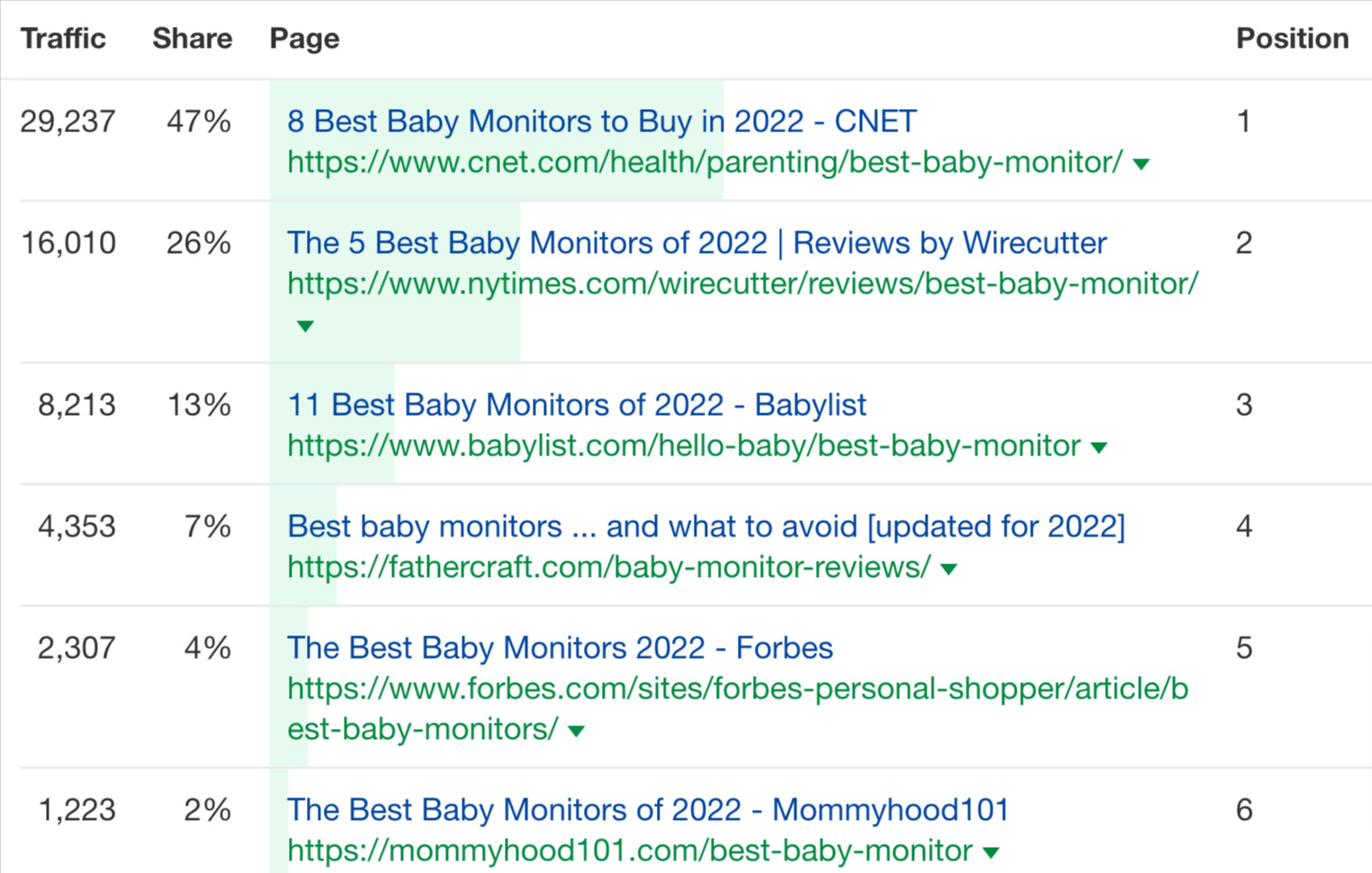
But rewriting content entirely can be too risky in such cases. Here, we should tread lightly and bet on small, incremental changes.
Here are some ideas that worked for us:
- Adding missing subtopics
- Refreshing outdated information
- Adding an FAQ section (with questions mainly from Google’s People Also Ask box)
- Making the content easier to digest (cutting irrelevant content, simplifying language, adding visuals)
- Adding free resources (templates, checklists, etc)
- Adding internal links (more on this in the next section)
We usually start by comparing our and our competitors’ content in our Content Gap tool. This tool shows us keywords they rank for, but we don’t. It’s an indication of what topics we may be missing.
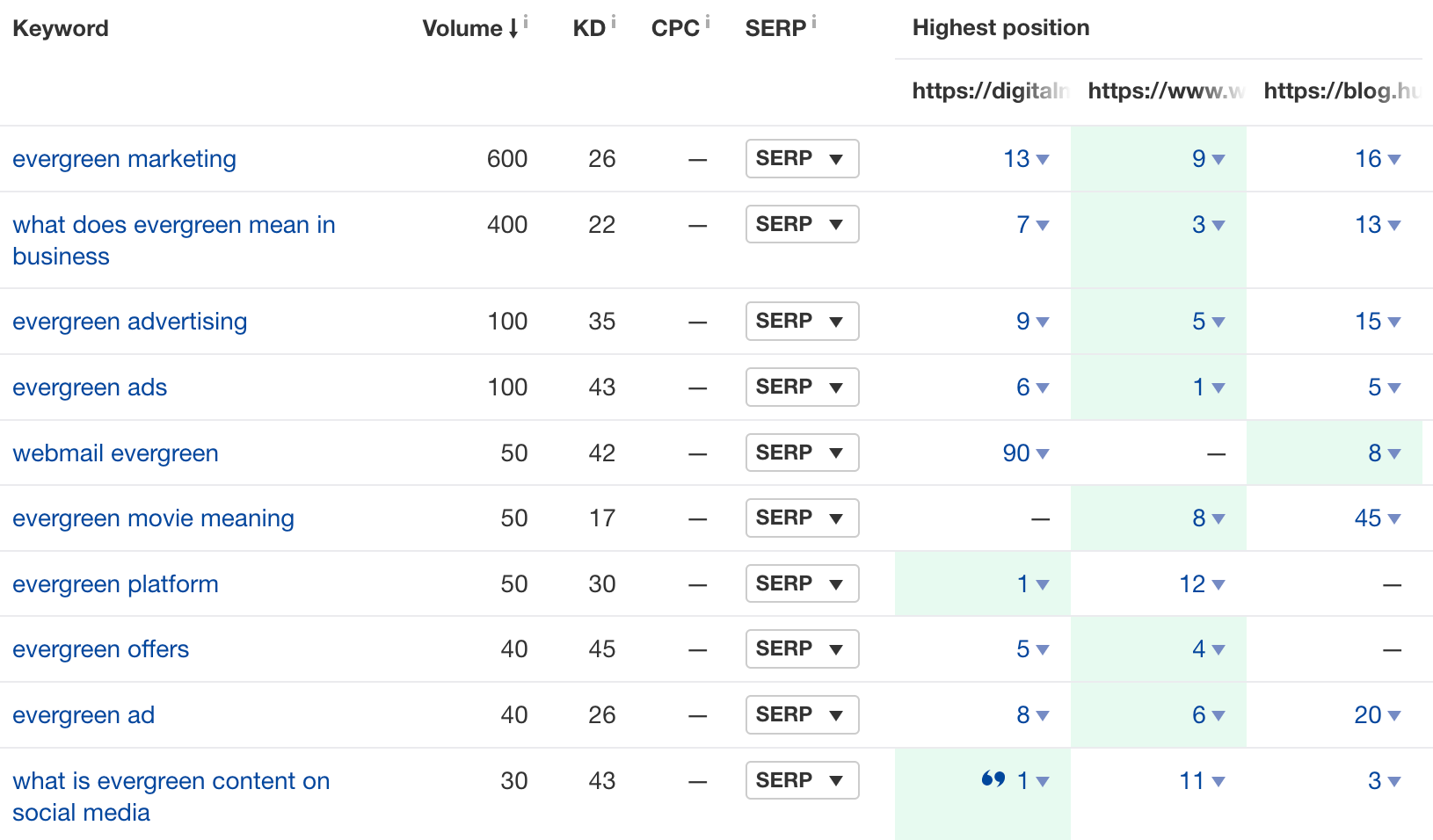
Learn more: Content Refreshing: A Step-by-Step Strategy (Based on Updating 50+ Posts)
Internal links are links from one page on the same domain to another.
Since internal links can pass PageRank (also referred to as “link equity”), you can add them from “stronger” pages to “weaker pages” to boost them.
How do you know which pages have strong link profiles? Unfortunately, there’s no way to check PageRank anymore. But there is a similar score in Ahrefs called URL Rating (UR).
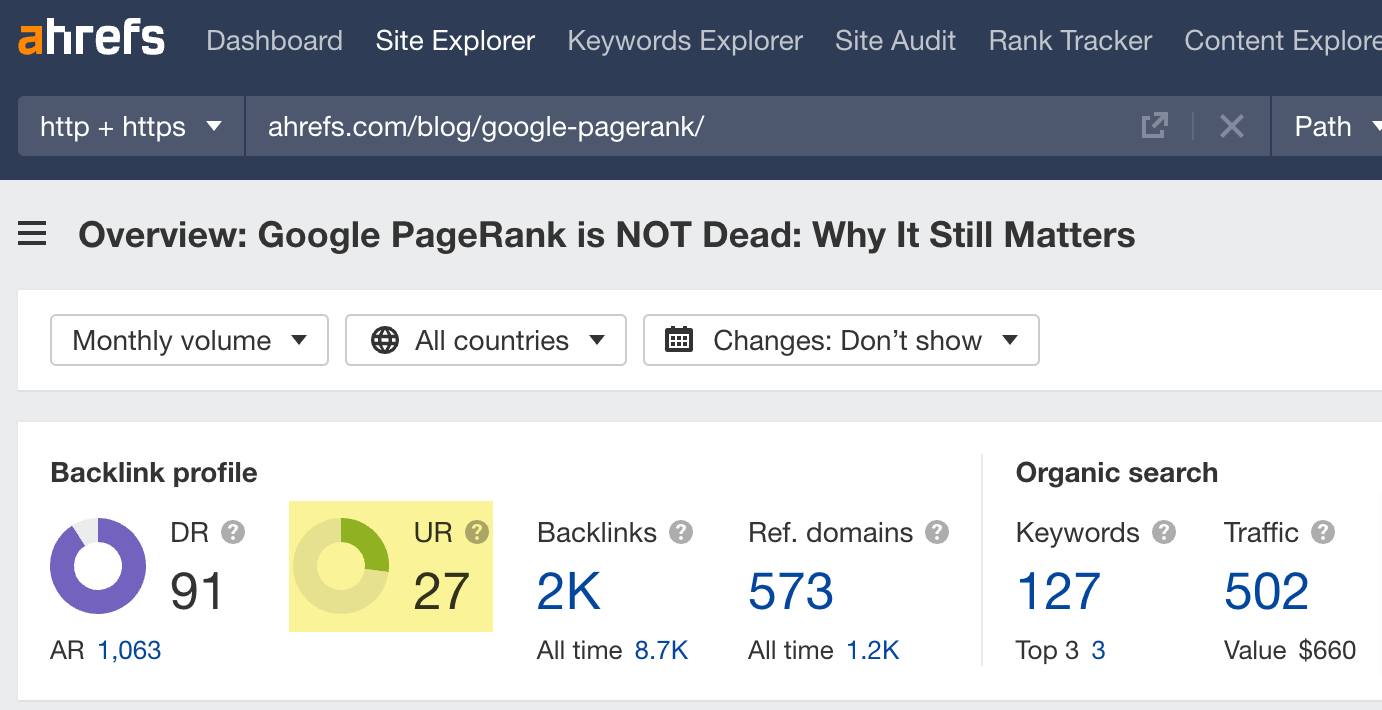
To find pages with high UR:
- Open Site Explorer and enter your domain
- Go to the Best by links report
- Look for the UR column
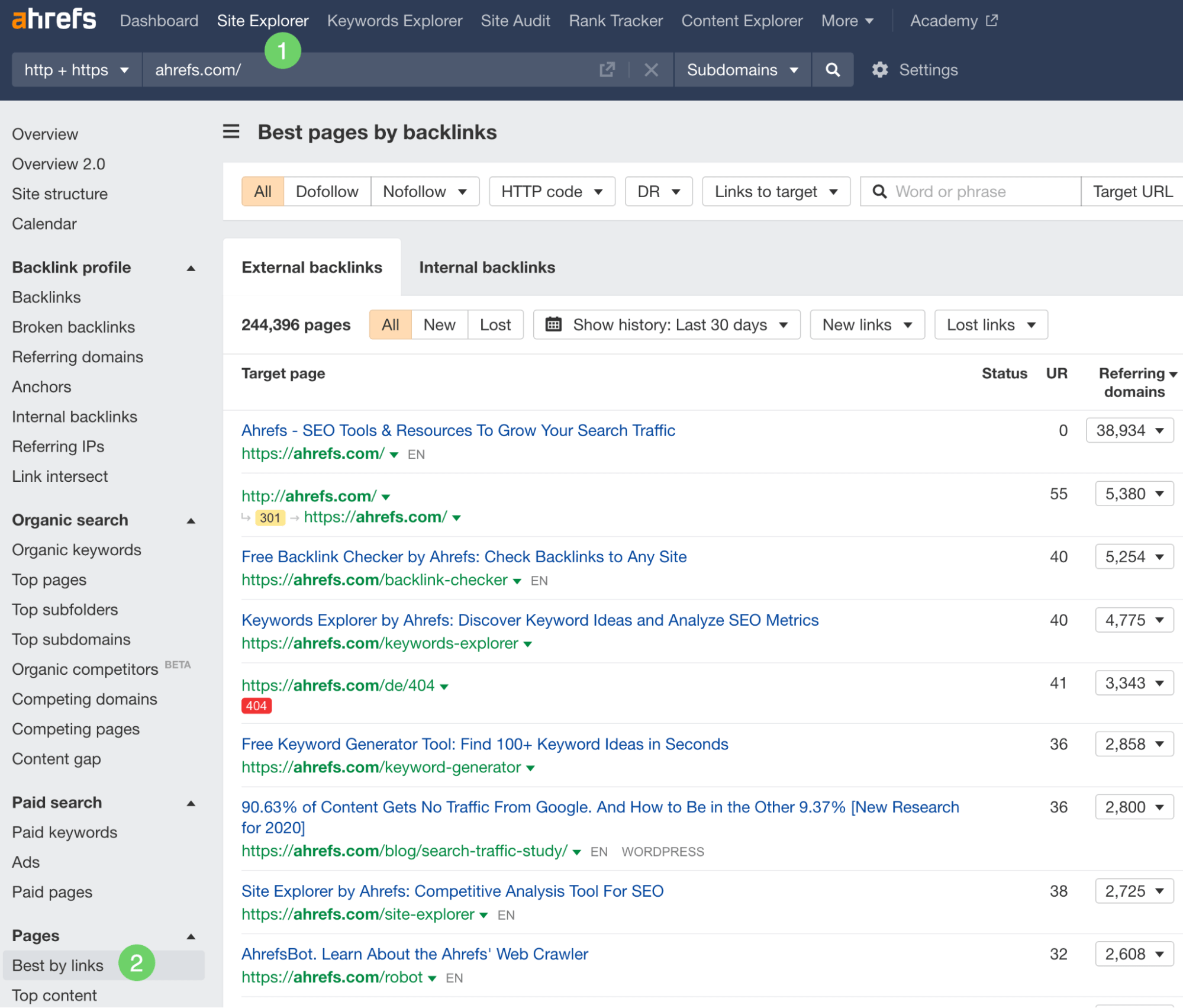
Now it’s just a case of skimming this list for pages about similar topics to the one you want to boost.
For example, we’ve linked from our free backlink checker tool with a UR of 40 to some of our content on link building.

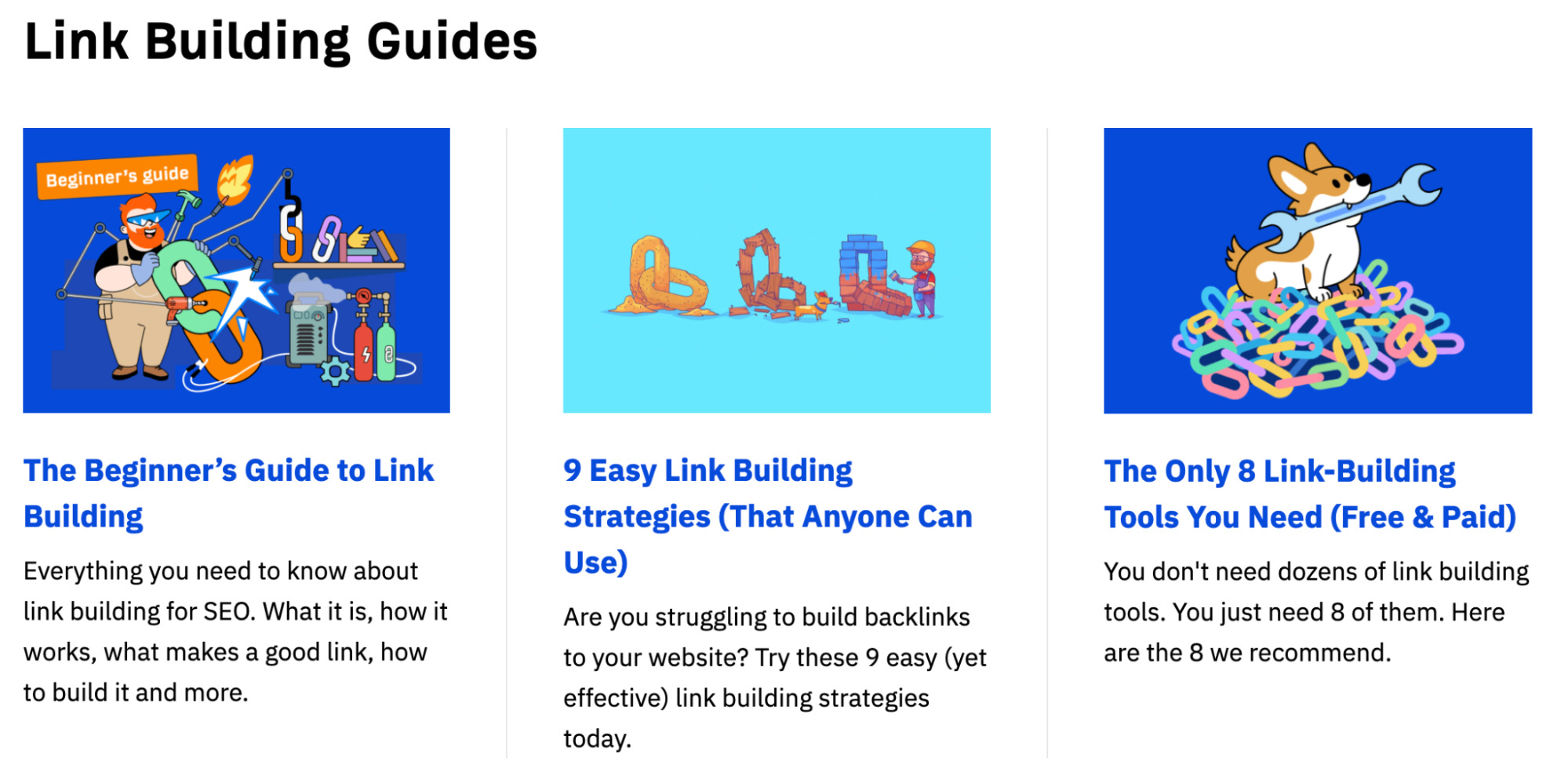
Backlinks are links from a page on one website to another. They remain one of the most important ranking factors for Google.
Generally, the more high-quality backlinks a page has, the more likely it is to rank #1 on Google (of course, other factors come into play too).
This means if you manage to get more backlinks to your pages, you can boost their rankings.
To illustrate the effect of backlinks, here’s how the ranking for one of our articles shot up after a successful outreach campaign (we’ve documented the entire process here):
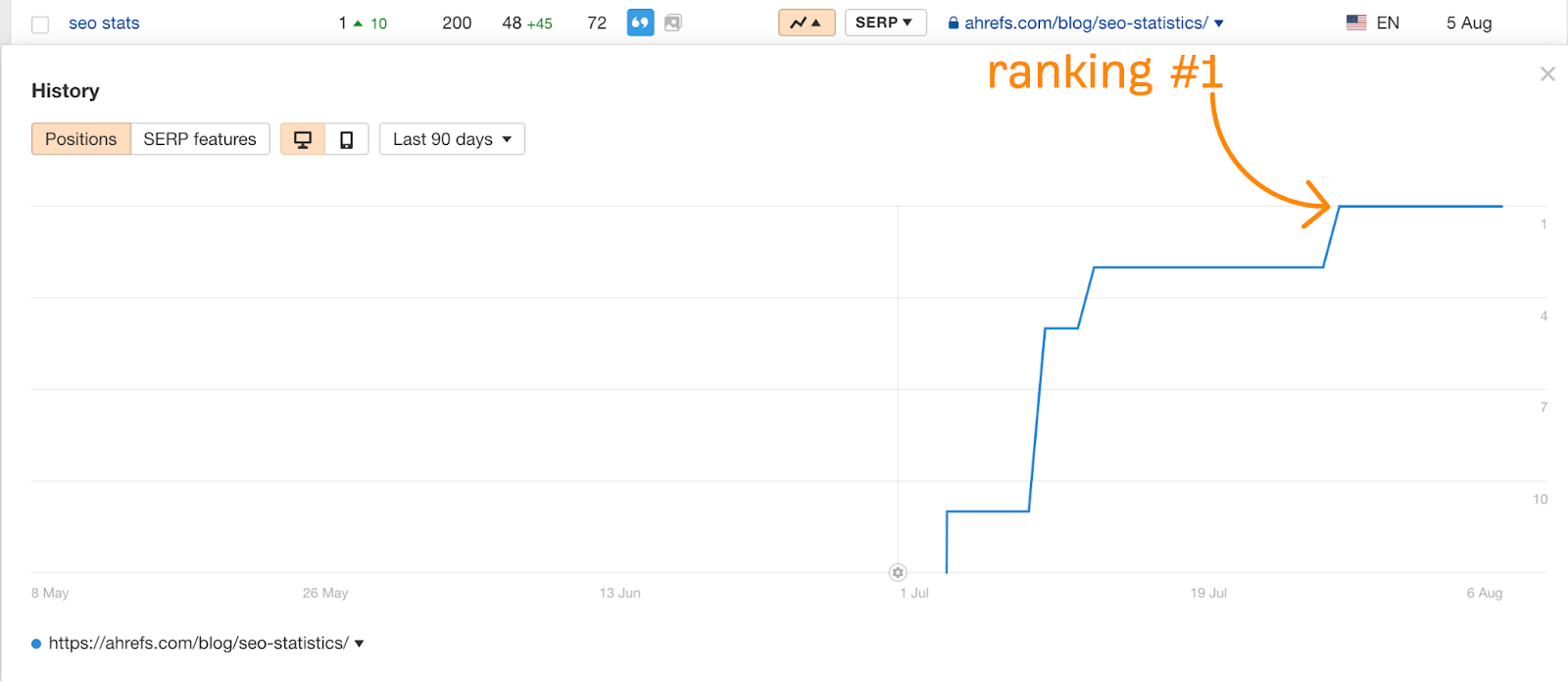
There are many link building tactics out there. We think these four are the best (they’re white-hat techniques that bring the best results):
- Pursuing competitors’ links – This is where you find out where your competitors got their backlinks and try to get the same pages or websites to link to you.
- Creating linkable assets – The so-called link bait—stuff so good that other content creators on the web will want to link to it.
- Content promotion – You guessed it. It’s telling other people about your content using advertising, outreach, or communities.
- Guest blogging – This is when another website agrees to publish your article. One of the things that you get in return is a backlink.
Learn more: Link Building for SEO: The Beginner’s Guide
Topic clusters (aka content hubs) are interlinked pages about a particular subject designed to cover the subject in full and rank.
They’re good for SEO because:
- Grouping content can make it easier to find for crawlers.
- It may help to build topical authority.
- They create relevant internal links naturally.
- The pillar page for the cluster may bring additional traffic (see example below).
Plus, they’re great for user experience since they make it easier for visitors to find your content.
But before creating topic clusters from scratch, which can be pretty time consuming, try browsing through your existing content to see if it can be repurposed into a cluster.
It’s something we did for our SEO guide. We took existing articles (cluster pages) and linked them together via a new page (pillar page).
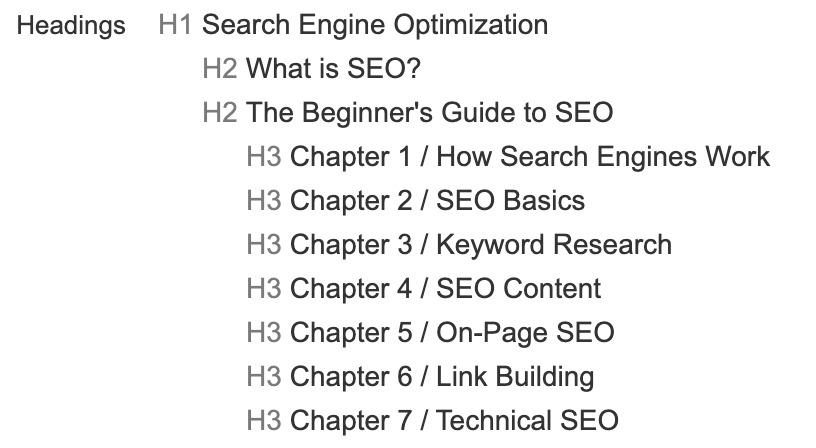
By doing this, we were able to attract more traffic easily with mostly old content.
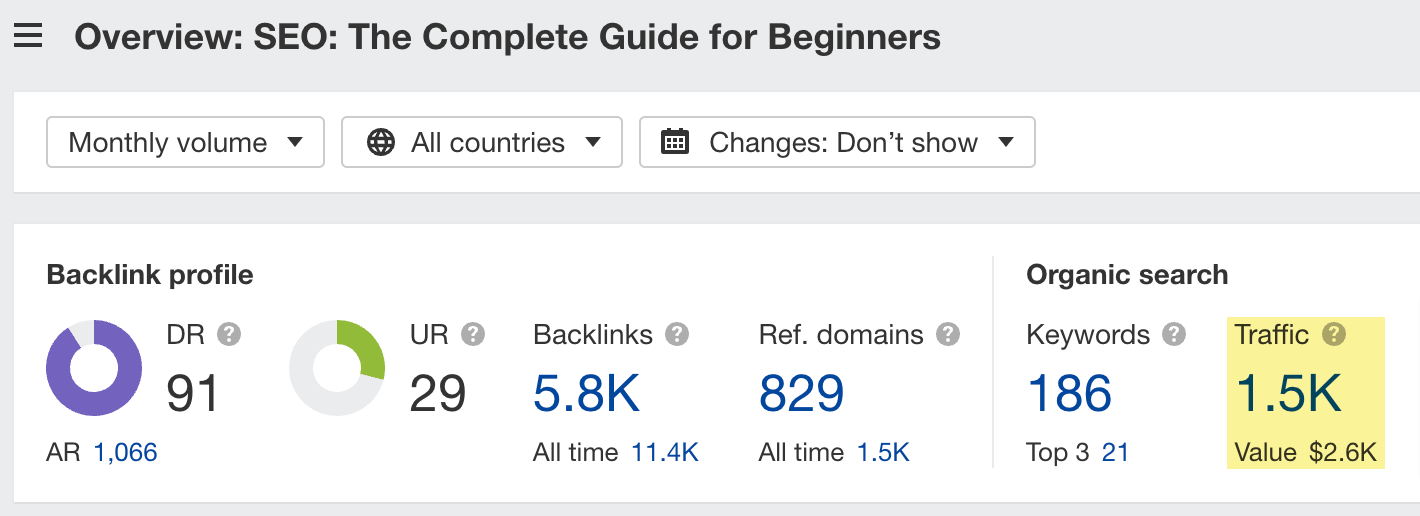
Here’s the gist of the process:
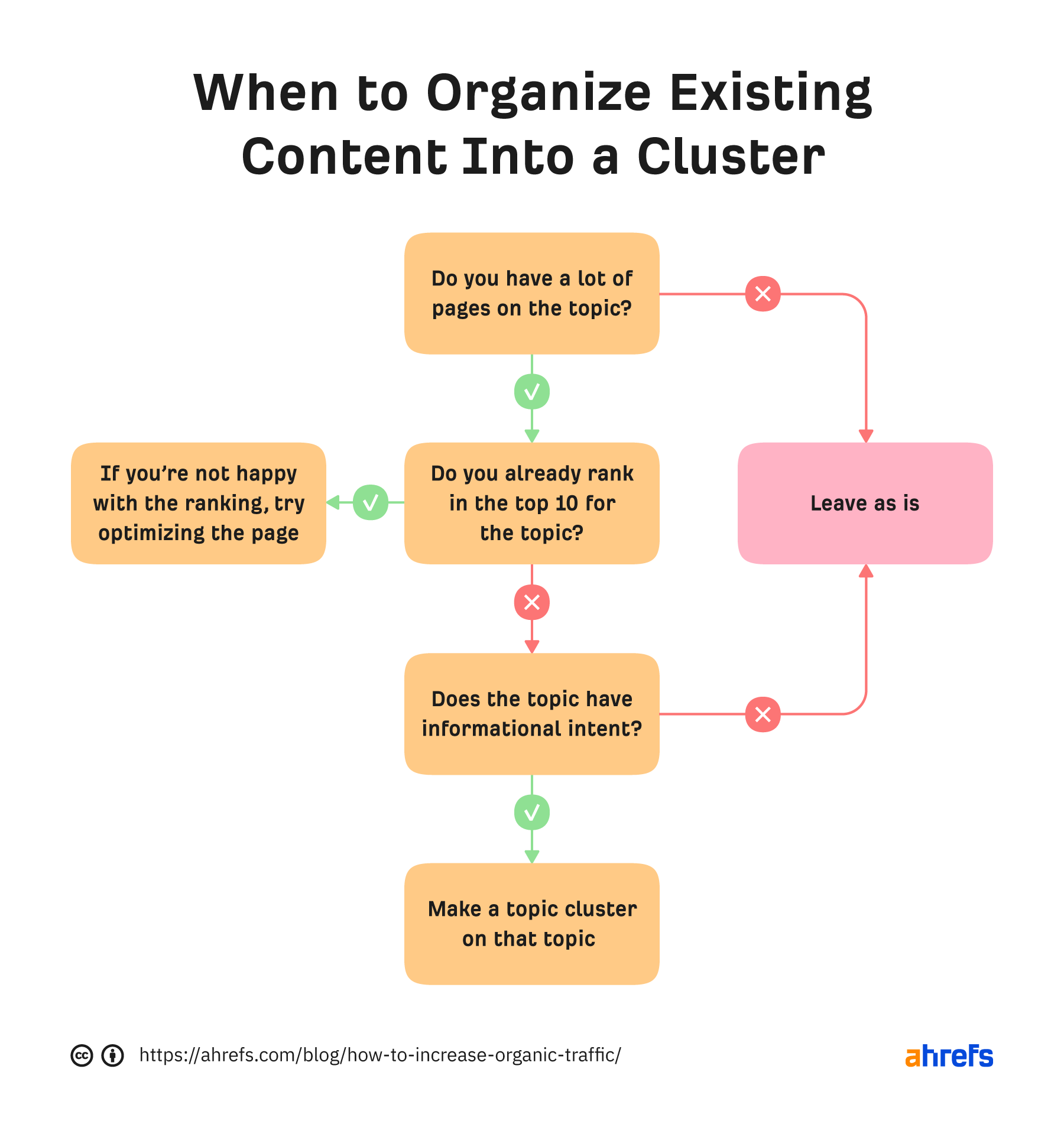
Schema markup is code you add to your pages to make them eligible for rich results in Google.
For example, this code…
"review": {
"@type": "Review",
"author": {
"@type": "Person",
"name": "Alex Wawro",
"url": "https://www.tomsguide.com/author/alex-wawro",
"image": {
"@type": "ImageObject",
"url": "https://cdn.mos.cms.futurecdn.net/3ByKfc678e7yx6pMNNhCf5.jpg"
},… allows Google to display this on the SERPs:

While not a ranking factor, rich results can lead to more clicks because they make your pages stand out.
The process is as follows. You can:
- Check available properties for your type of content in Google’s documentation.
- Deploy the code (probably best if you use a schema markup generator).
- Test the code using this Rich Results Test tool.
- Use the URL Inspection tool in Google Search Console to see if things look OK. Google also recommends requesting indexing in Google Search Console to let it know about changes.
Learn more: Rich Snippets: What Are They and How Do You Get Them?
Up to this point, we’ve covered tactics that can get extra mileage from your existing content. Let’s talk about creating new content.
Content designed to attract organic traffic needs a good target keyword. To find that, take a keyword research tool like Ahrefs’ Keywords Explorer and look for keyword ideas that:
- Have search traffic potential.
- Have search intent you can match.
- Can bring valuable traffic.
- Are within your capabilities to rank.
Let me explain with an example.
Since our main expertise is in SEO, we often write about this topic on our blog. To find SEO-related topics, we turn to our very own Keywords Explorer. Here is an example of such a keyword, along with its key SEO metrics:
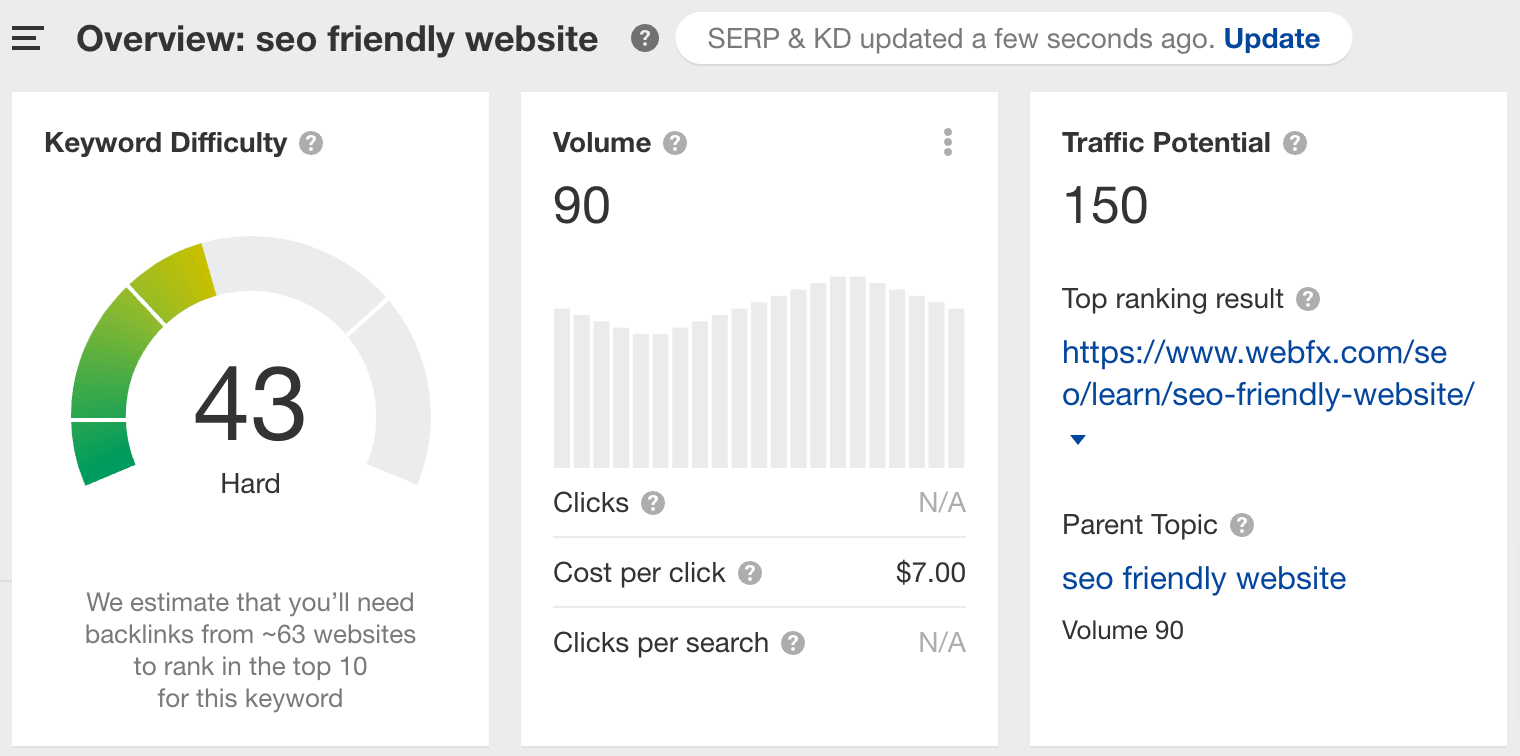
And here’s why it ticks all four boxes for us:
- It has traffic potential – Ranking #1 for this keyword will bring us an estimated 150 monthly visits.
- Search intent is guides – We know this from looking at the results in Google. Definitely within our wheelhouse to create.
- It’s about SEO – There is a high probability that people interested in the topic will also be interested in our product. In other words, it has business potential for us because we can feature our product naturally.
- It’s not that hard for us to rank for – We’ve had continuous success ranking for keywords with Keyword Difficulty (KD) scores lower than 50, so this fits the bill.
Based on this assessment, we ended up targeting this keyword. We currently rank in the top three.

Yes, you can target the same or similar keywords as your competitors and get organic traffic.
If you play your cards right, you can even outrank your competitors. But if not, you can still get traffic if you rank on page #1.
Here’s how to find your competitors’ organic keywords with Ahrefs’ Site Explorer (in fact, any pages’ organic keywords):
- Enter their domain or a subfolder (e.g., moz.com/blog)
- Go to the Organic keywords report
- Refine the list of keywords if needed (e.g., you can sort by volume or use the filters to see only low-difficulty keywords or keywords that mention particular words like “how.”)

You can also learn a lot from your competitors’ best content. In Ahrefs, we have two reports that help with this:
- Best by links report shows which content attracted the most backlinks
- Top pages report shows which pages bring the most traffic
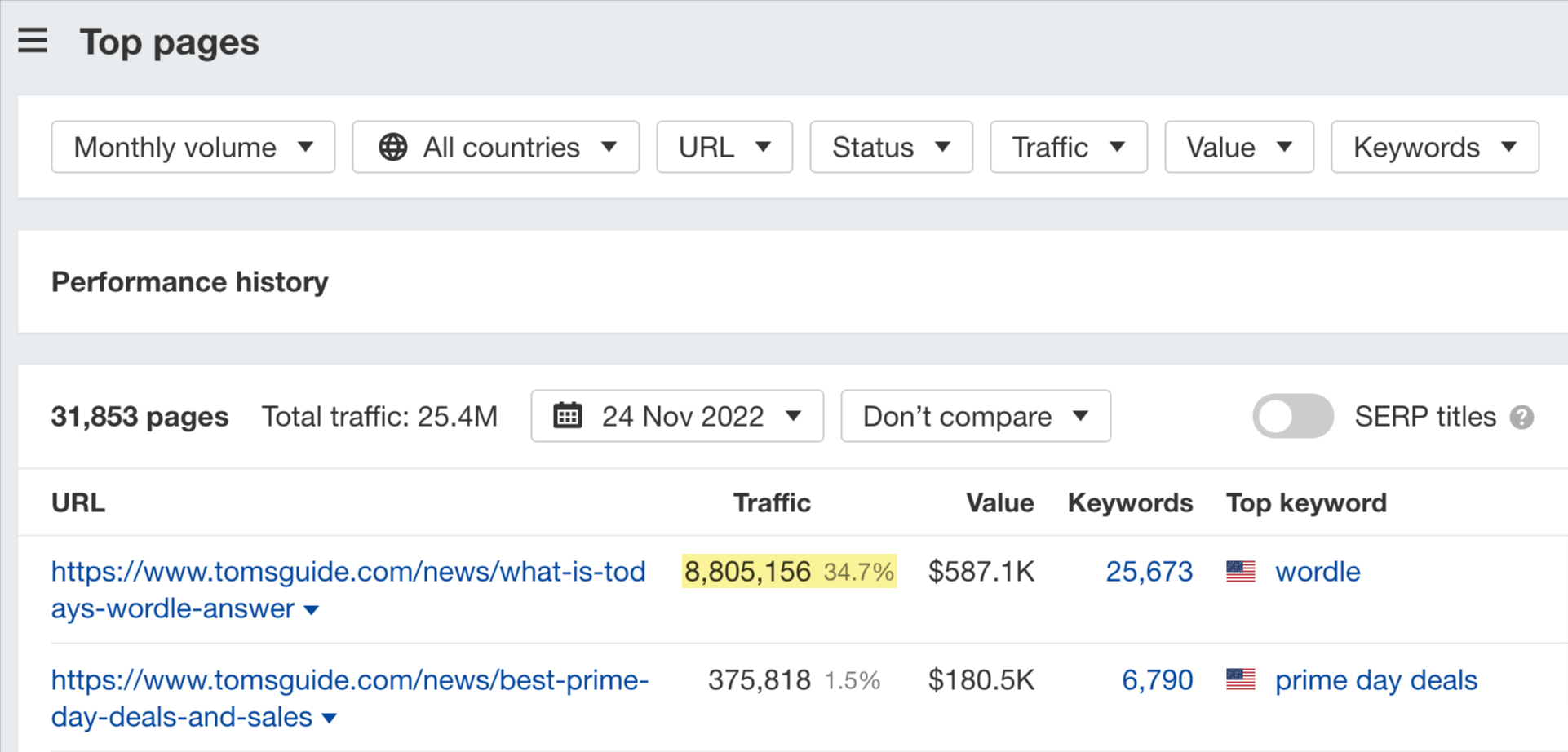
You can also use the Content Gap report to compare which keywords your competitors rank for, but you don’t. This can also help you to find topics to cover.
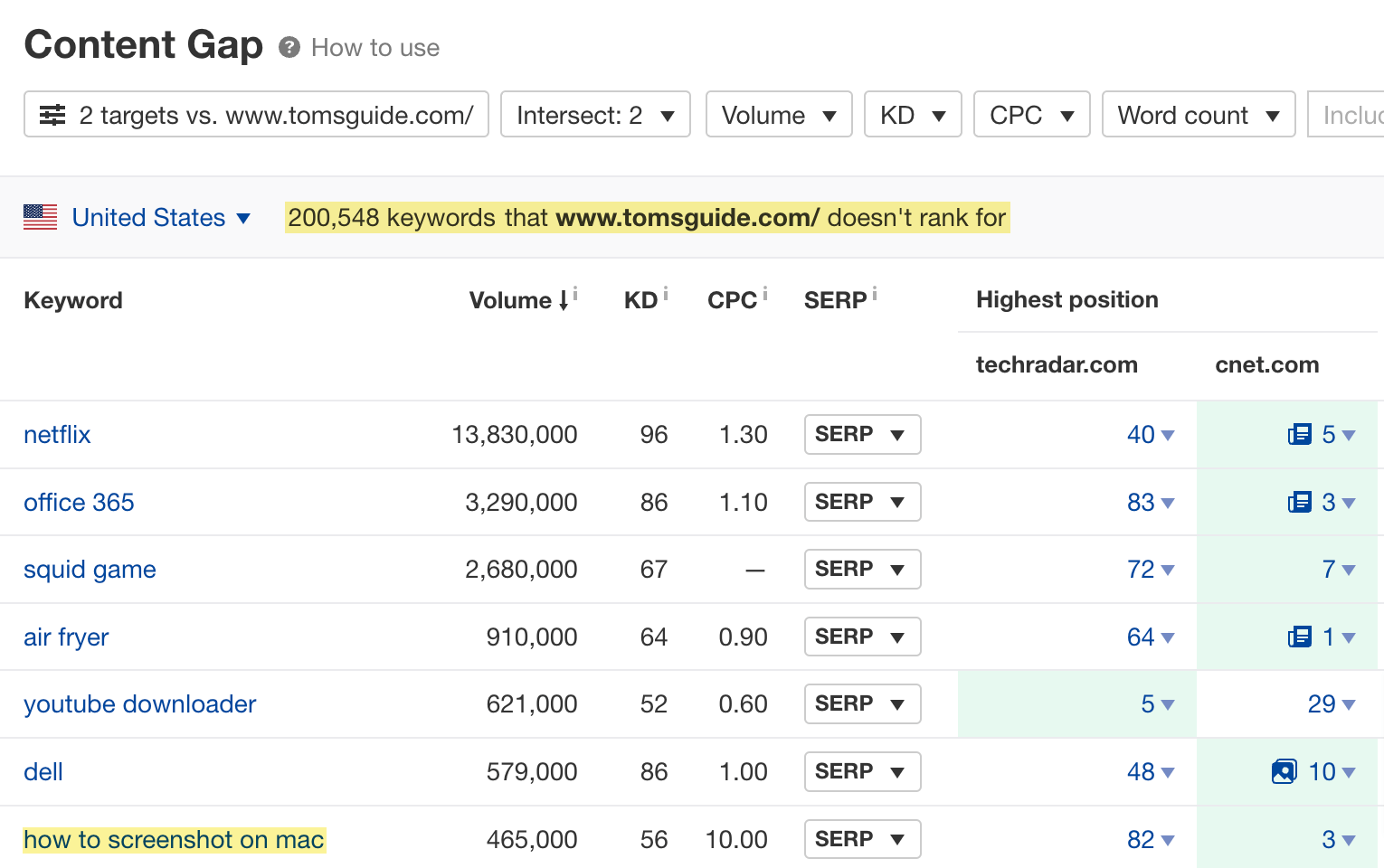
PRO TIP
If you’re not entirely sure who your “organic” competitors are, check out the Organic competitors report. This shows websites that rank for the same keywords as you.

Learn more: Keyword Competitive Analysis: How to Find Your Competitors’ Keywords
If you have a blog (and I guess you do), you can invite people outside of your company to publish on it.
- They get exposure on your channels, referral traffic, and a backlink from your website.
- You get exposure from the author’s promotion, organic traffic, and backlinks from websites pointing to the article.
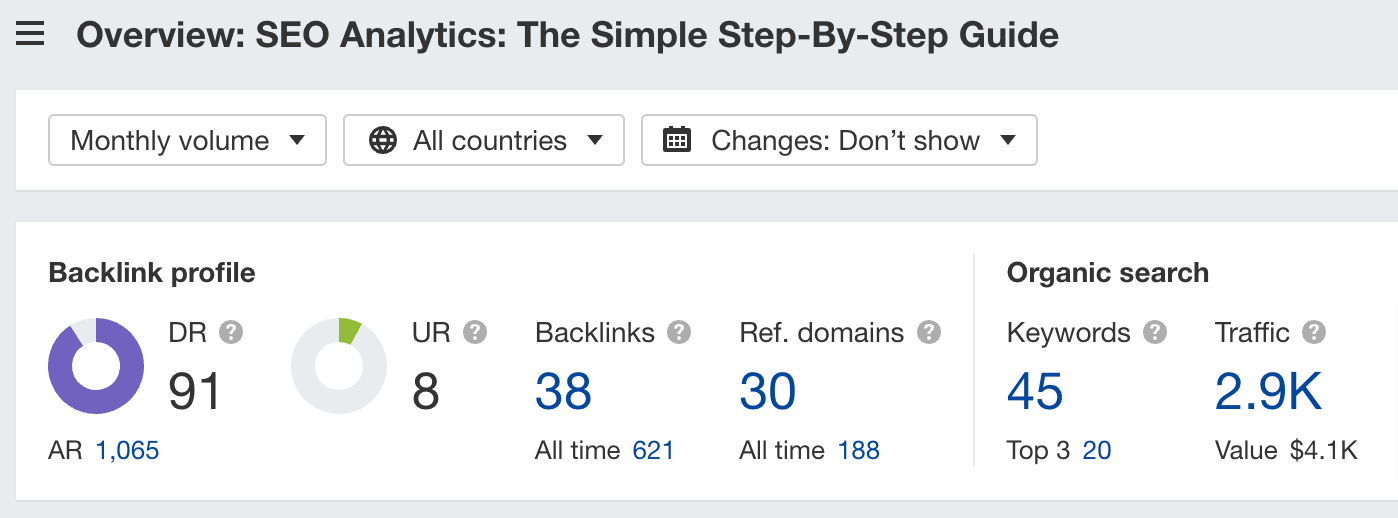
If you’d like a reference point for inviting people to write for your blog, check out how we do it. Key points are to:
- Have a landing page where you clearly explain all the details.
- Make it attractive. For example, offer some cool swag, say how many people read your blog, or offer paid promotion.
- Have a system for gathering content pitches. The simplest solution is to create a dedicated email and ask folks to pitch their ideas there, but a more efficient way is to set up an online form.
- Make sure to place the link in some visible place on your website.
- Promote the program. Repeatedly.
- Aim to find authors with expertise in their fields (good for readers, important for E-A-T).
Long-tail keywords are search queries that get a small number of monthly searches. They tend to be longer and more specific.
To illustrate, if “headphones” is the general topic (short-tail keyword, aka head term), then “best headphones for skiing” will be a “long tail.”
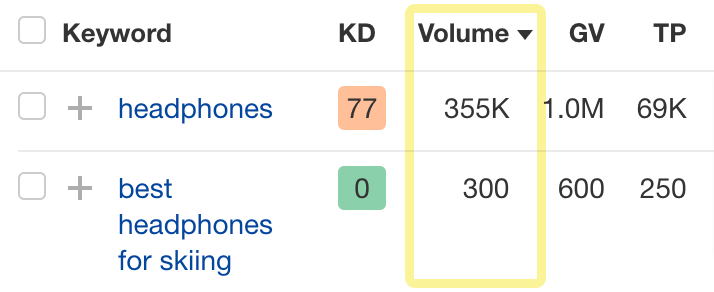
In this keyword research technique, you find long-tail keywords you already rank for and create dedicated content for them to rank higher.
Let me illustrate the concept:

We’ve done exactly this with our post about off-page SEO. We saw that one of the long-tail keywords it ranked (poorly) for was “on page vs off page seo.” Judging by the SERP, it needed a dedicated article—so we wrote one.
Here are the results of our efforts:

To find your long-tail keywords with Site Explorer:
- Enter your domain or subfolder
- Go to the Organic keywords report
- Set Volume to max 300 (simplification from our end, but you can put a higher or lower number) and Position to 20–70
- Click Show results
Now it’s just a case of picking keywords that can be targeted separately. To do this, see if the top 10 ranking pages target the keyword directly. If yes, then it’s probably a good opportunity. If not, probably not.

Learn more: Long-tail Keywords: What They Are and How to Get Search Traffic From Them
Final thoughts
How do you know if these tactics are working out for you?
Besides checking organic traffic in your analytics tool, you should track your rankings in Google. But use something other than Google because it always shows personalized (distorted) results one way or another. So consider using a rank tracker like Ahrefs’ Rank Tracker.
The last ingredient you will need to increase your organic traffic is patience. Sometimes, you may see results in a matter of days. But on average, it takes three to six months (check out our study and learn why).
Got questions? Ping me on Twitter (or Mastodon).
